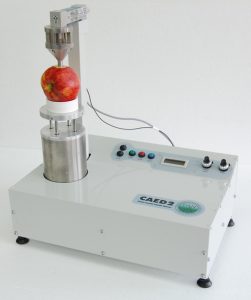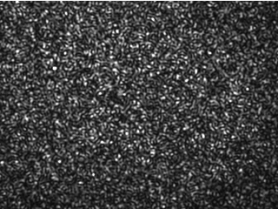
Contact Acoustic Emission Detector (CAED)
We have developed a new apple tester – the Contact Acoustic Emission Detector (CAED). CAED replaces the sensory panel for quality assessment. A standard procedure requires 10 apples of a certain material only and lasts only 10 minutes to classify their texture to one of 10 grades.
User manual can be downloaded here (PDF in Polish)
Publications:
- Zdunek A., Cybulska J., Konopacka D., Rutkowski K. 2011. Evaluation of apple texture with contact acoustic emission detector: a study on performance of calibration models. Journal of Food Engineering, 106, 80-87.
- Zdunek A., Cybulska J., Konopacka D., Rutkowski K. 2010. New contact acoustic emission detector for texture evaluation of apples. Journal of Food Engineering, 99, 83-91.
- Zdunek A, Cybulska J., Konopacka D., Rutkowski K. 2011. Inter-laboratory analysis of firmness and sensory texture of stored apples. International Agrophysics. 25, 67-75.
CAED was developed under the NR 12 0031 04 project founded by The National Centre for Research and Development (NCBiR).

Biospeckles
The quality of fruits and vegetables can also be analysed non-destructively. At present we are working on a technique which is based on the spatial-temporal correlation (biospeckle). In this method a laser illuminates the surface and the light scattered from the surface and from under the skin layers is recorded by a CCD camera. For living objects the speckle pattern is fluctuated in time (animation to the left shows apple biospeckles). Analysis of the correlation between consecutive images provides information about living processes within the material. The method is non-destructive and allows monitoring the state of the fruits or vegetables during vegetation or storage. The biospeckle could also be used for animal and human tissue, for example, to discover diseases or infections.
Publication:
- Adamiak A., Zdunek A., Kurenda A., Rutkowski K.. 2012. Application of the biospeckle method for monitoring bull’s eye rot development and quality changes of apples subjected to various storage methods-preliminary studies. Sensors, 12(3), 3215-3227.
- Kurenda A., Adamiak A., Zdunek A.. 2012. Temperature effect on apple biospeckle activity evaluated with different indices. Postharvest Biology and Technology 67, 118–123.
- Zdunek A., Herppich W.B.. 2012. Relation of biospeckle activity with chlorophyll content in apples. Postharvest Biology and Technology, 64, 58–63.
- Zdunek A., Cybulska J.. 2011. Relation of Biospeckle Activity with Quality Attributes of Apples. Sensors, 11, 6317-6327.
At present, a device for biospeckle evaluation has been developed under the NR 12 0137 10 project founded by The National Centre for Research and Development (NCBiR).

















